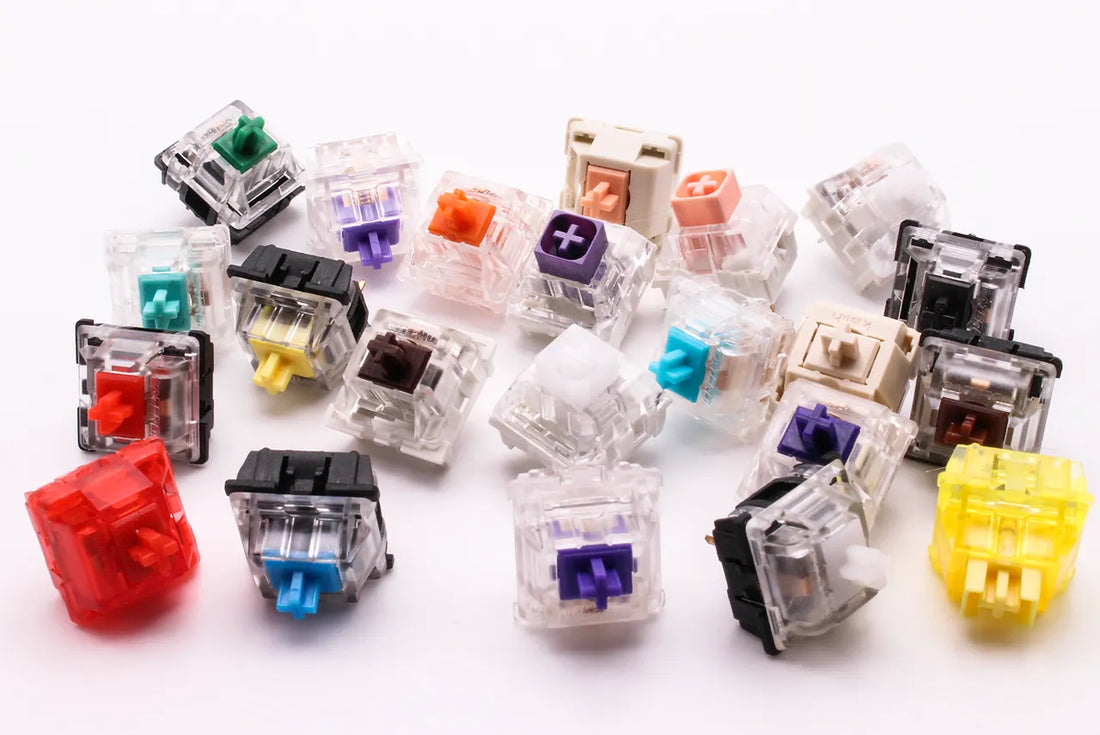Keyboards are more than just tools for typing; they are extensions of our digital selves. The way a keyboard feels when you press a key can significantly impact your typing experience. Linear, tactile, and click switches are the three primary types of key switches found in mechanical keyboards, and they each offer a unique typing feel. In this blog, we'll delve into the differences between these switch types to help you choose the one that suits your preferences.
1. Linear Keyboards: Smooth and Silent
Linear switches provide a consistent and smooth keystroke. When you press a key, there's no tactile bump or audible click to interrupt your typing flow. The key press is linear, meaning it moves directly up and down without any resistance or tactile feedback.
Pros:
Smooth and quiet keystrokes.
Great for fast typists and gamers.
Consistent actuation force across all keys.
Cons:
Lack of tactile feedback might not be preferred by those who like a clear indication of when a key press registers.
2. Tactile Keyboards: A Notable Bump
Tactile switches introduce a noticeable bump in the middle of the keystroke, providing tactile feedback when the key press actuates. This bump signals that the key press has registered without the need to fully bottom out the key.
Pros:
Clear tactile feedback helps with typing accuracy.
Ideal for typists who like to feel when a keypress is activated.
Cons:
Some users might find the bump distracting or tiring during extended typing or gaming sessions.
3. Click Keyboards: Audible and Tactile
Click switches offer both tactile feedback and an audible click sound when a key is pressed. This click sound is reminiscent of traditional typewriters and provides a satisfying acoustic experience.
Pros:
Distinct tactile feedback and audible click provide a highly satisfying typing experience.
Ideal for typists who enjoy a "clicky" sound and tactile feel.
Cons:
The click sound can be noisy, which may not be suitable for quiet office environments or shared spaces.
Choosing the Right Switch for You
The choice between linear, tactile, and click switches ultimately depends on your personal preferences and intended use. Here are some guidelines to help you decide:
Typing Speed: If you type quickly and want a smooth experience, linear switches are a good choice.
Typing Accuracy: If you prioritize accuracy and like to feel when a keypress registers, go for tactile switches.
Auditory Experience: If you enjoy the click sound and tactile feedback, clicky switches might be your preference.
Workspace Environment: Consider your work or gaming environment; quiet places may benefit from linear or tactile switches, while a clicky switch might be more appropriate in a private space.
In conclusion, the choice of keyboard switch type is a matter of personal preference. Understanding the differences between linear, tactile, and click switches can help you make an informed decision, ensuring a typing experience that suits your needs and brings satisfaction to your keyboard interactions.

